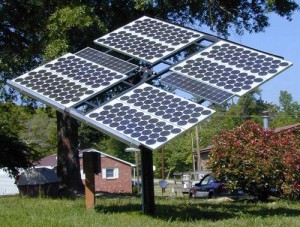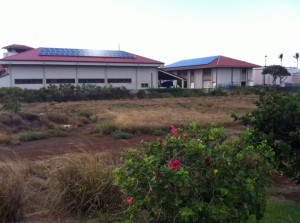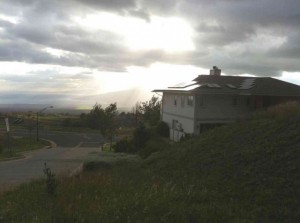Hawaiian Electric Relaxes Requirements For Home Solar
By Dave Smith
Hawaiian Electric Co. announced it was relaxing one of the requirements for small-scale solar power installations for its customers.
As of Oct. 1, residential and some commercial customers on Oahu, Maui and the Big Island with new photovoltaic (PV) systems of up to 10 kilowatts will not be required to pay for an interconnection study. Maui Electric Co. and Hawaii Electric Light Co. are subsidiaries of Oahu-based HECO.
Also, any customers who previously paid for a study for 10kW systems will be refunded the cost of the study and any upgrades they required, HECO said in a statement.
“These smaller systems have less potential to impact service reliability for customers,” the statement said.

Most net-metering customers of Hawaiian Electric and its subsidiaries won’t have to pay for interconnection studies, the company said today. Photo courtesy of Living Off Grid.
The announcement affects customers who install PV systems that feed surplus electricity into the utilities’ grids during daytime hours. The practice, which reduces the customer’s overall electrical bill, is known as net-metering.
The utility had come under criticism for requiring that anyone wanting to install a net-metering project pay for a study if the new system would push the amount of new electricity on a circuit to more than 15% of peak load or 50% of daily minimum load.
HECO said that the 50% threshold established last year by the Public Utilities Commission will be changed to 75%.
HELCO President Jay Ignacio told the Hawaii County Council in May that the interconnectivity studies – which cost from $500 to $15,000 each, depending on their complexity – were necessary to protect the grid from damaging power fluctuations.

Solar panels were installed on the Kahului fire station (pictured) and other county buildings to reduce electricity costs. File photo by Anne Rillero.
While the changes mean that the studies won’t be required for most small systems, they may still be needed “on a few circuits” where the intermittent energy supply could result in service disruptions or safety hazards, HECO said today. The 50% threshold and associated study will also remain for larger net-metering systems.
The utility said that its experience in working with net-metering systems – which it said have at least doubled every year since 2008 – has allowed it to institute the changes.
HECO said it has developed an online Solar Resource Center at goingsolar.heco.com to help customers learn about choosing a solar contractor, financing the installation and to provide other information on PV systems.











